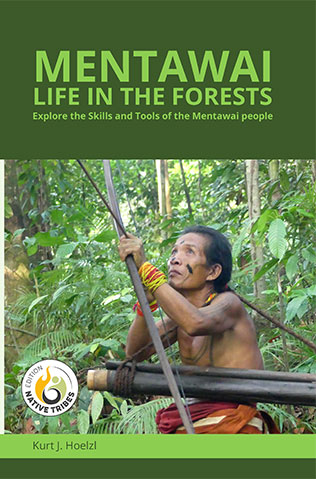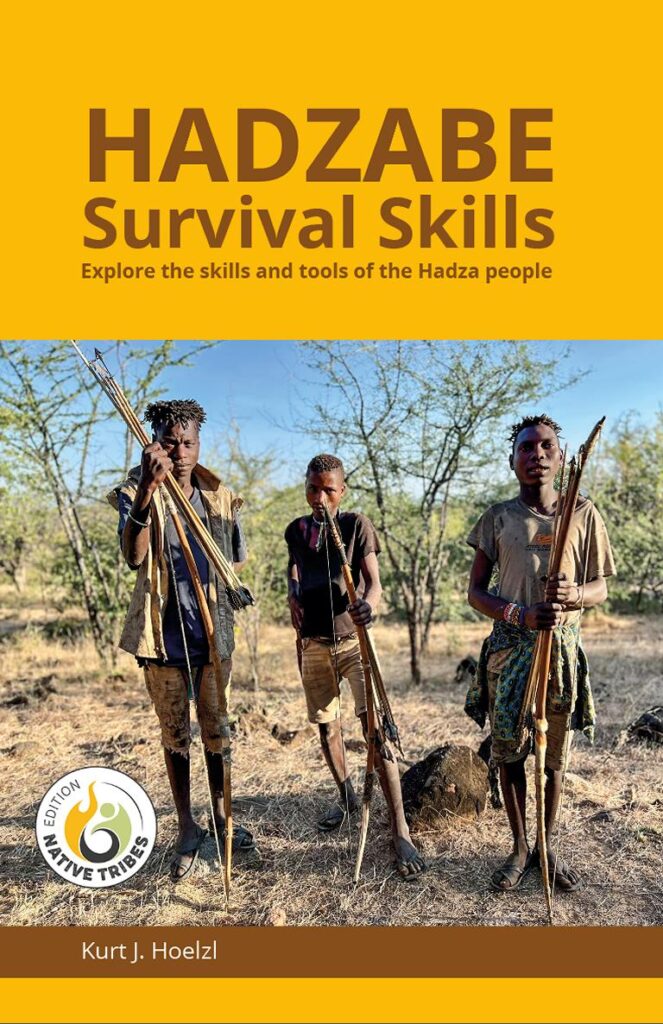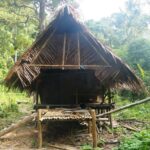Orang Rimba (locally called Kubu) shelters and dwellings in the forests are designed in different styles rooted in their semi-nomadic lifestyle. These structures can be divided into two main groups: semi-permanent structures and shelters when they are on the move. The author visited a band of Orang Rimba people in Jambi province / Sumatra in December 2023.
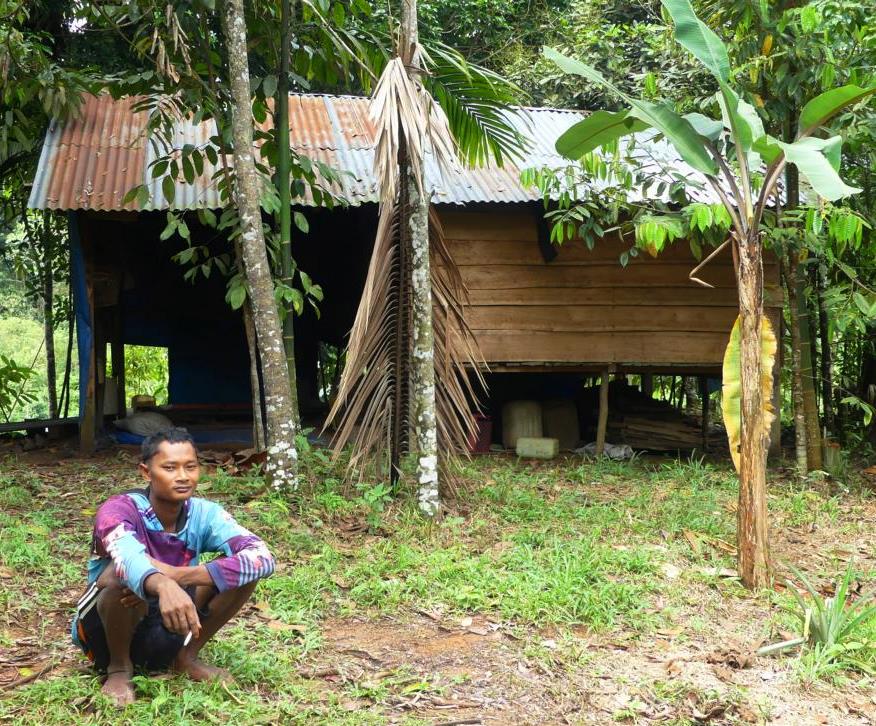
Semi-permanent structures
Orang Rimba people living in the forest need a home base when returning from hunting, foraging, and collecting trips for Jernang fruits (Daemonorops draco (Willd.) Blume). At these structures, they have more cooking utensils and are securely protected against the weather. If the area is exploited by these activities, they will leave their housing structures and move to a new site. Also, the old site will be left when the king dies.
Therefore, these houses can not be considered permanent but serve as semi-permanent structures. Depending on the social status within the family band, these semi-permanent dwellings are built with varying degrees of care, as will be discussed in the following.

All semi-permanent structures of the Orang Rimba family band were located far from other structures of this group. The distance over land between these houses was between 300 to 700 meters.
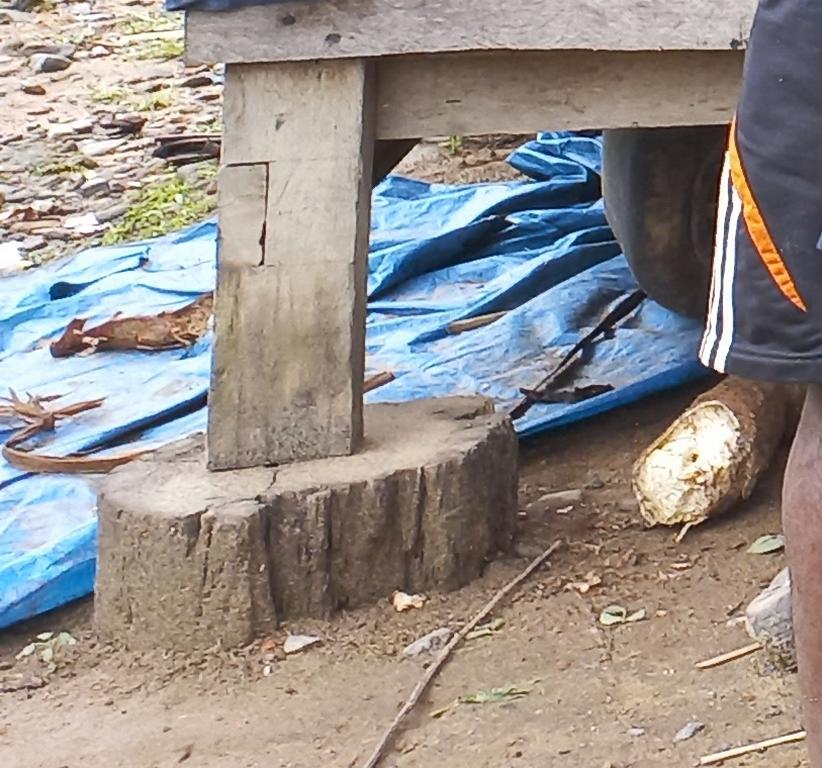
Basic hut design
The basic design of the four huts we saw was always the same. A platform was built on heavy poles set on thick slices of hardwood, elevated between 50cm / 1 ft 8’’ and 1 m / 1.1yd from the ground. Sawn wooden boards were laid on this platform, which served as a living and sleeping area.
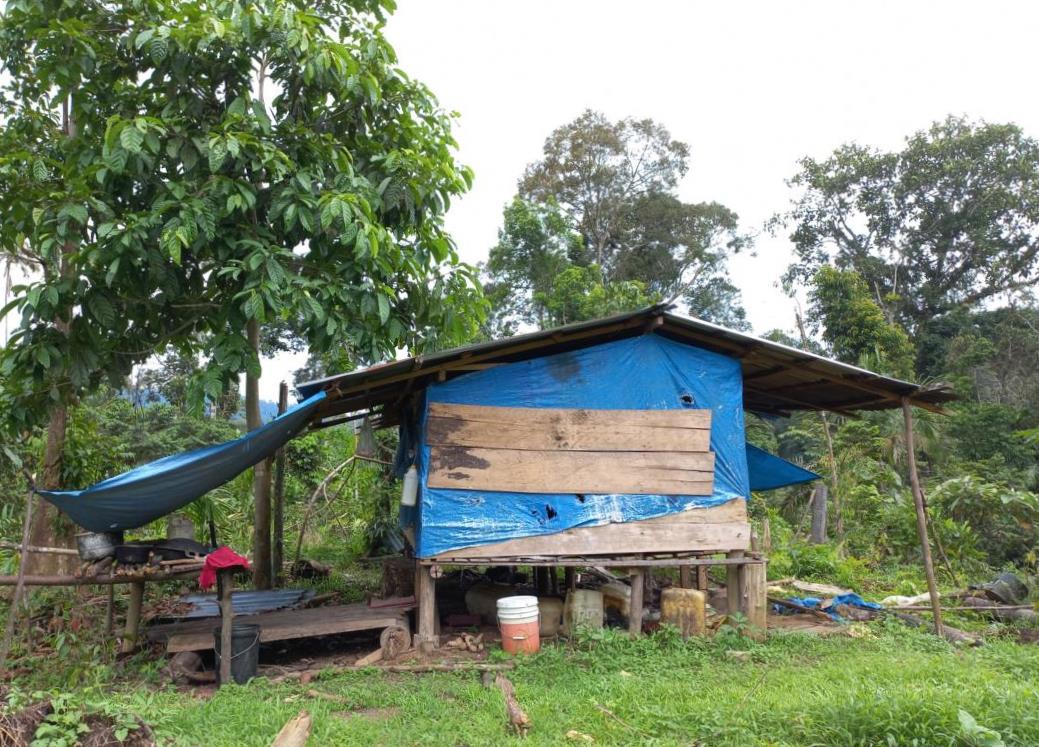
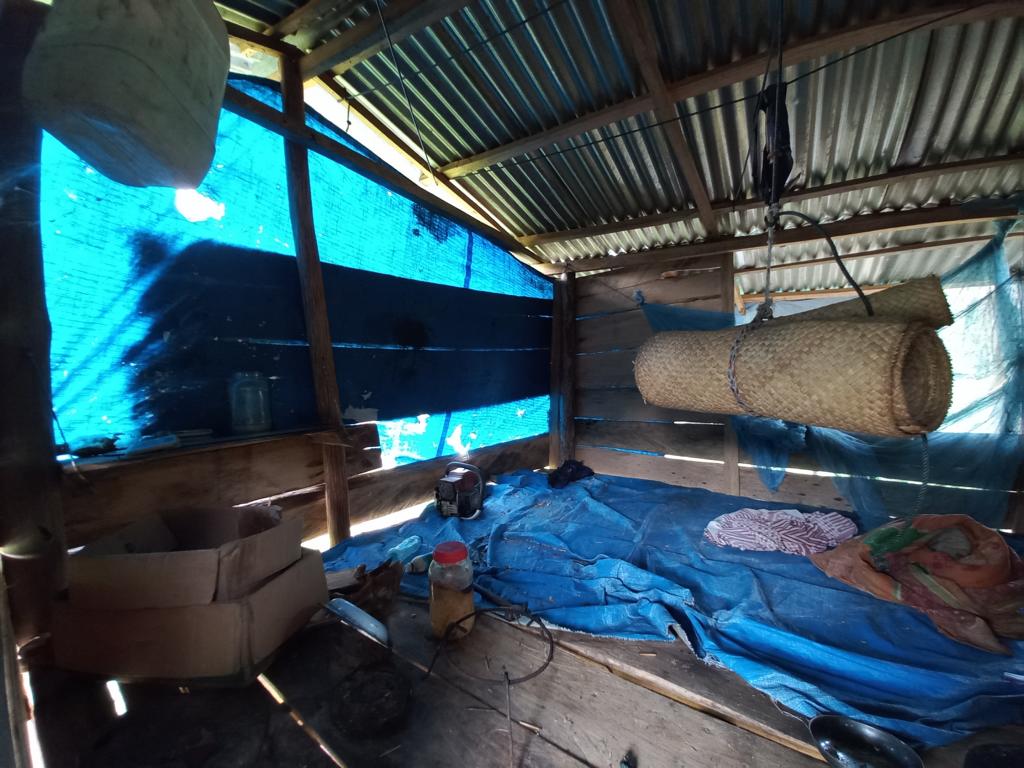
Still, in 1971, the Polish Ethnologist J. Kamocki found that Medak River Kubu (nowadays called Orang Rimba) built these platforms differently. He describes it in the linked article:
‘More extensive and larger shelters are built for longer residences in the same place. A larger number of thicker poles strengthens these because they support a much heavier platform. This platform comprises extra strong poles set lengthwise upon the frame, covered crosswise with slender bamboo sticks or heavier sticks split in two. Mats are laid out upon these bamboos.’
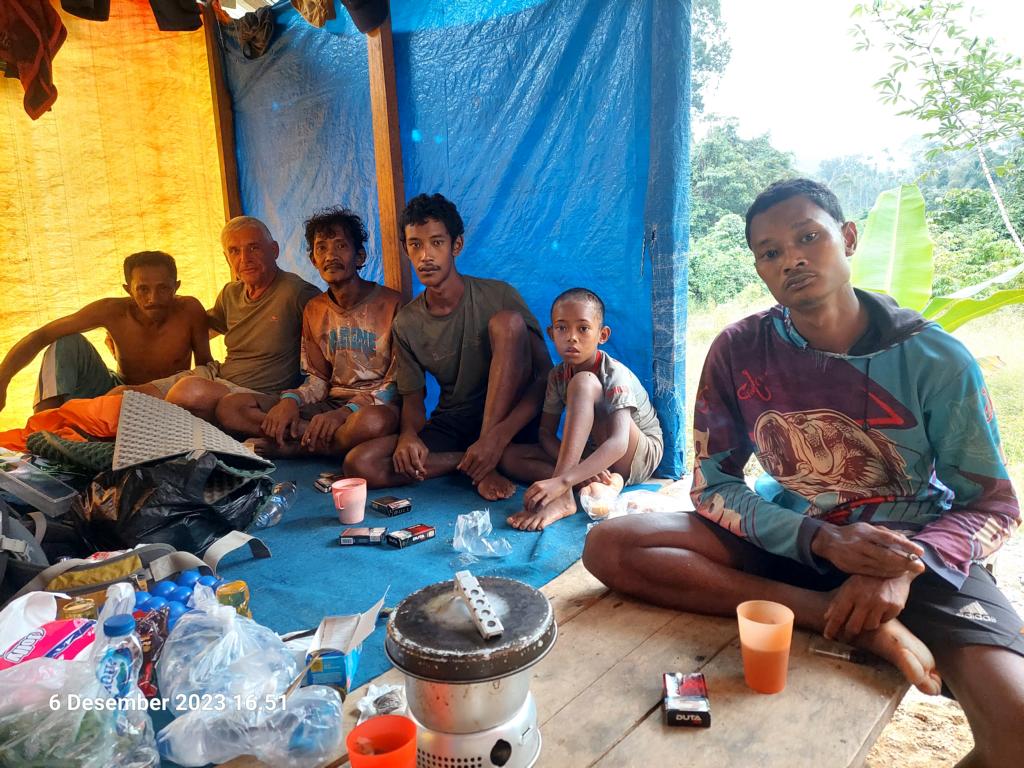
Nowadays, instead of bamboo sticks, wooden planks are used. The picture above shows the most modern development of an Orang Rimba hut built with material supplied by the government: plastic tarpaulins, wooden posts, beams, and planks. However, the Orang Rimbas of our visited clan were not interested in building a shelter with these governmental-supplied materials. Therefore, our Minakabao boatman built it together with his assistant. When built, however, the tribals happily used it.
Doors & windows
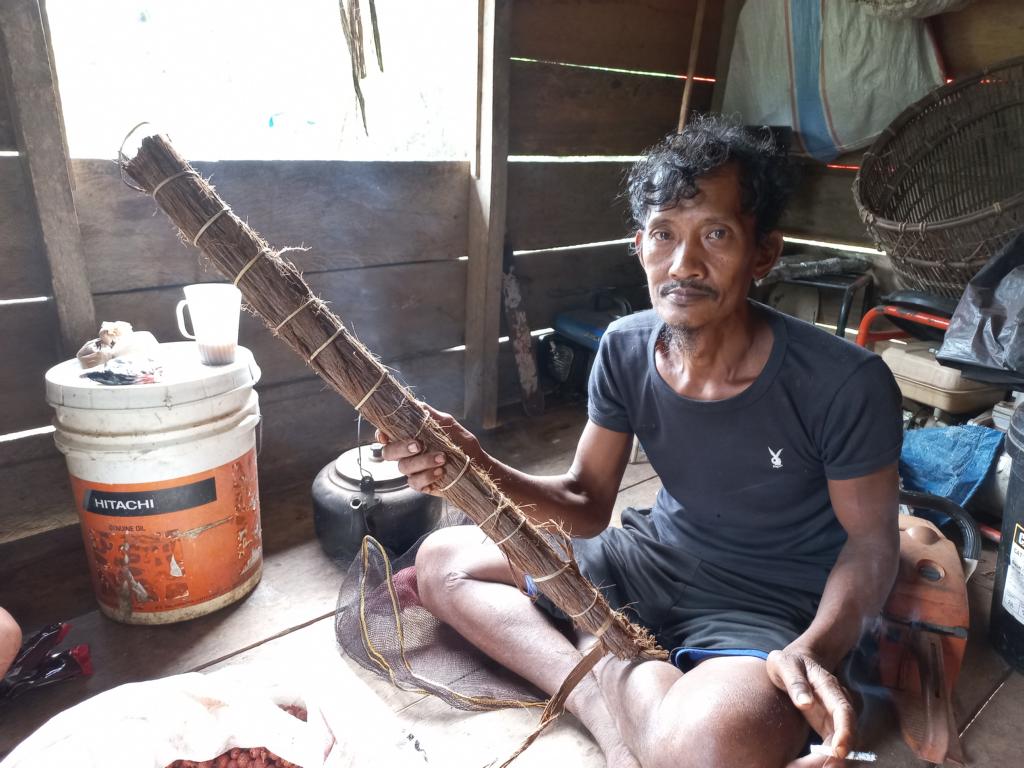

Doors and windows, like they are in the Western sense, are non-existent and are just openings in the walls without any inserts.
Kitchen
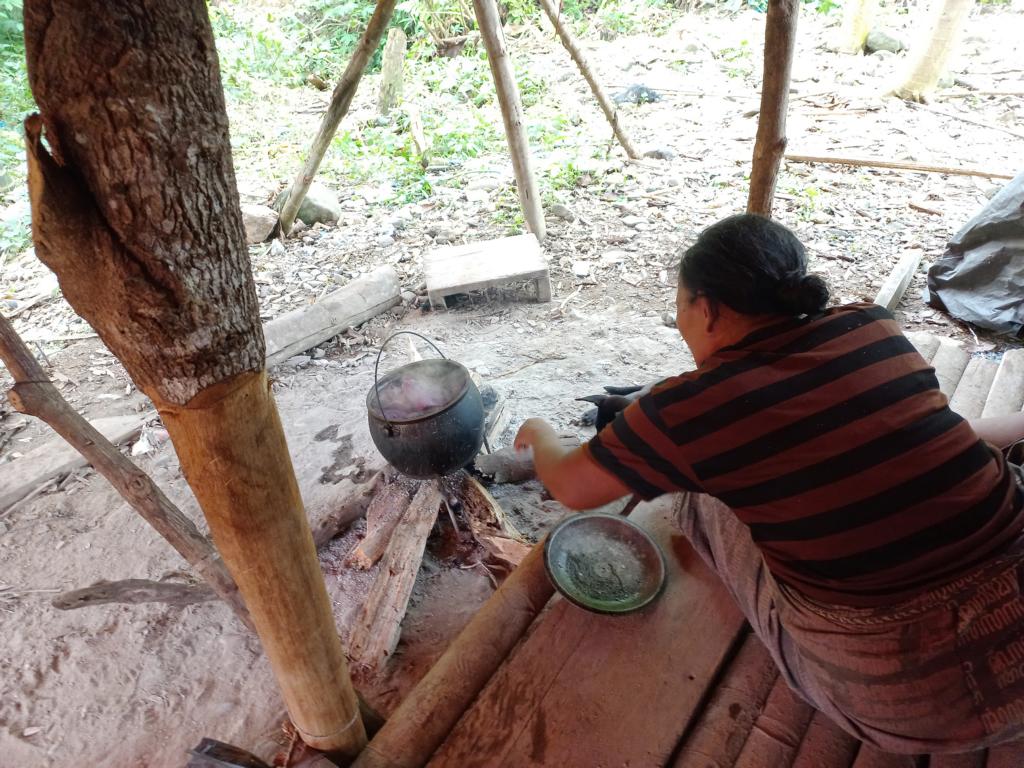
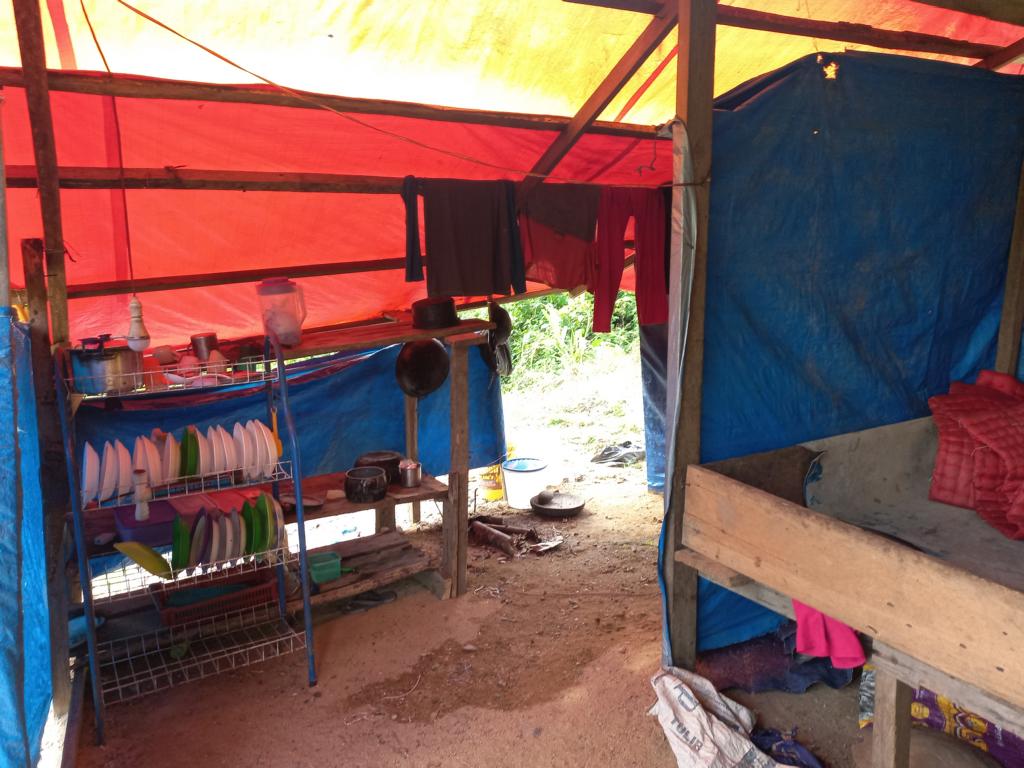
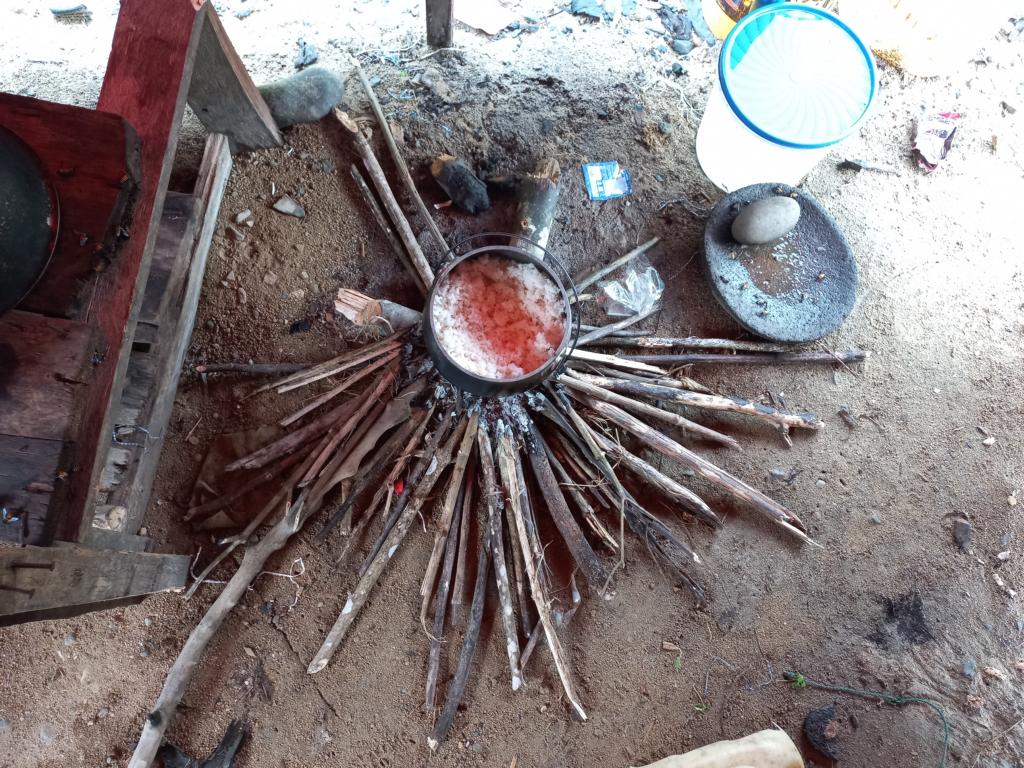
In this hut, a family of four adults (a mother and her three daughters) normally lives with their seven kids. At the time of our visit, they all went into the forest for two weeks to collect Jernang rattan fruits.

Walls
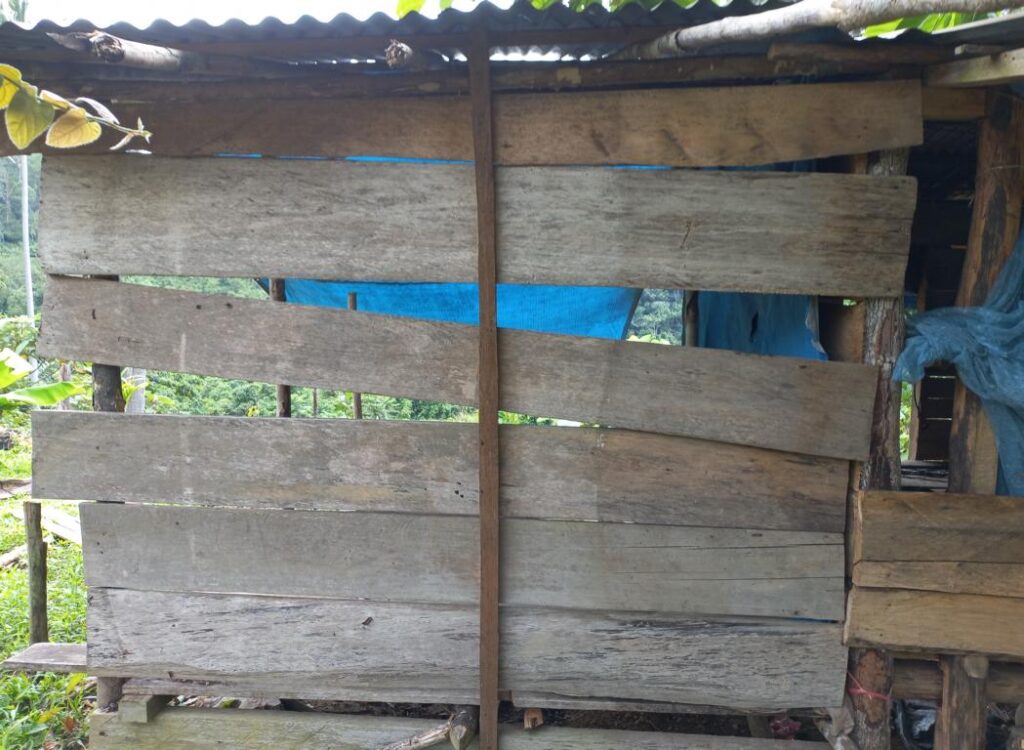
All the huts we saw had walls made of wooden planks, plastic tarpaulins, or a combination of both. The gaps between the planks were large, so it was airy inside the hut. With smoke from fires – and on one occasion from insect repellent coils – flying insects kept at bay. The use of a mosquito net was only seen in one hut.
Roofs
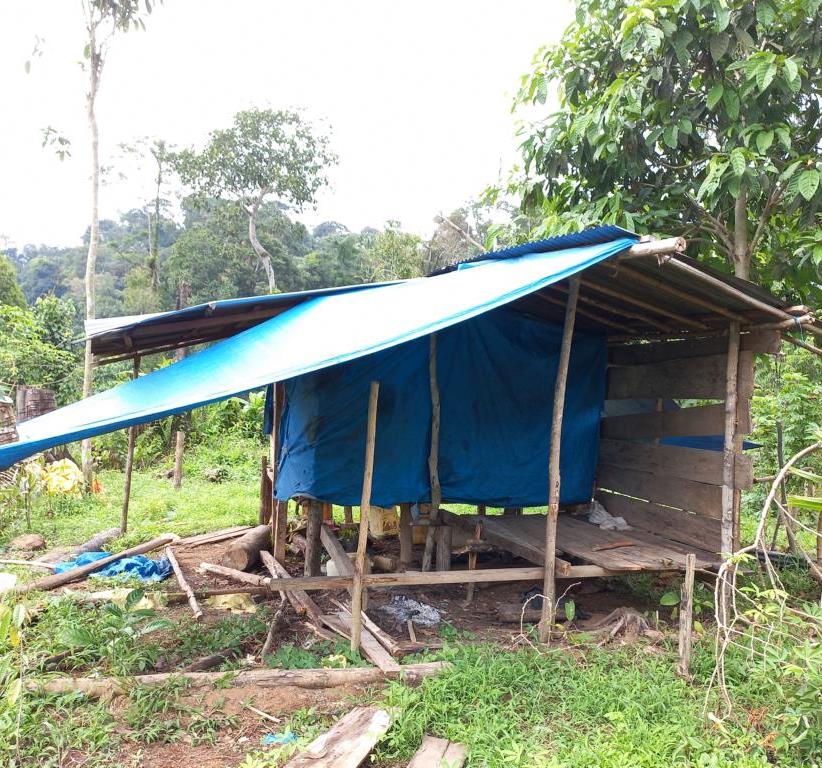
Roofs were made from plastic tarpaulins, corrugated iron sheets, or combined materials. Plastic tarps are increasingly replacing corrugated iron sheets.
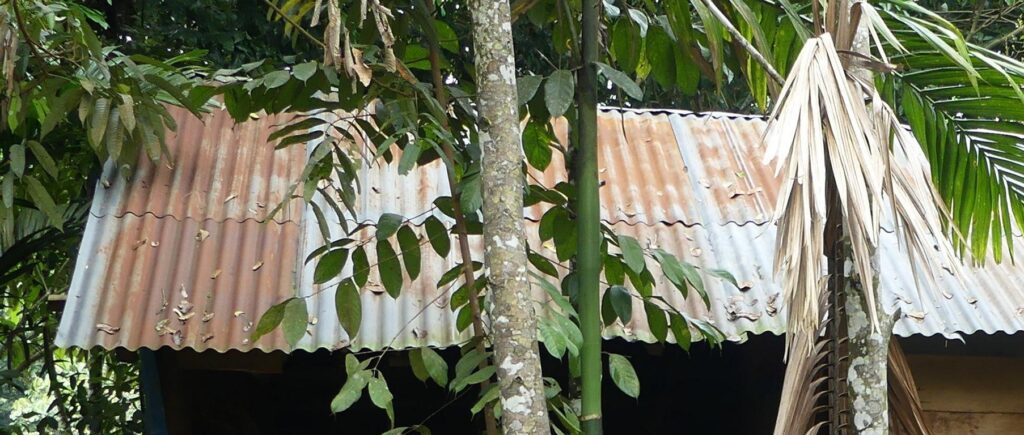
Pop-up shelters when wandering around
Whereas in former times, natural materials were used for building improvised shelters while traveling, nowadays—again—plastic tarps are the preferred building material. These are lightweight and waterproof and allow building an improvised shelter quickly, although they are not pleasing to the eyes at all.

Whole families sleep for some days in such shelters when collecting Jernang rattan fruits. At the same time, they hunt and forage for food. When no more resources can be found within convenient walking distance around this shelter, the Orang Rimba family breaks camp and moves to another place.
They first set two thick wooden logs onto foundation stones on the ground at the new location. These logs will be covered with dia. 5cm / 2’’ thick sticks to form a platform. This way, people can avoid the damp ground and many creepy crawlers when sleeping. Two main props hold the inclined roof beam in the middle, and support props conveniently keep the tarp away from the inhabitants. Mosquito nets are not used at such a shelter, but a small fire during the night keeps these pests away.
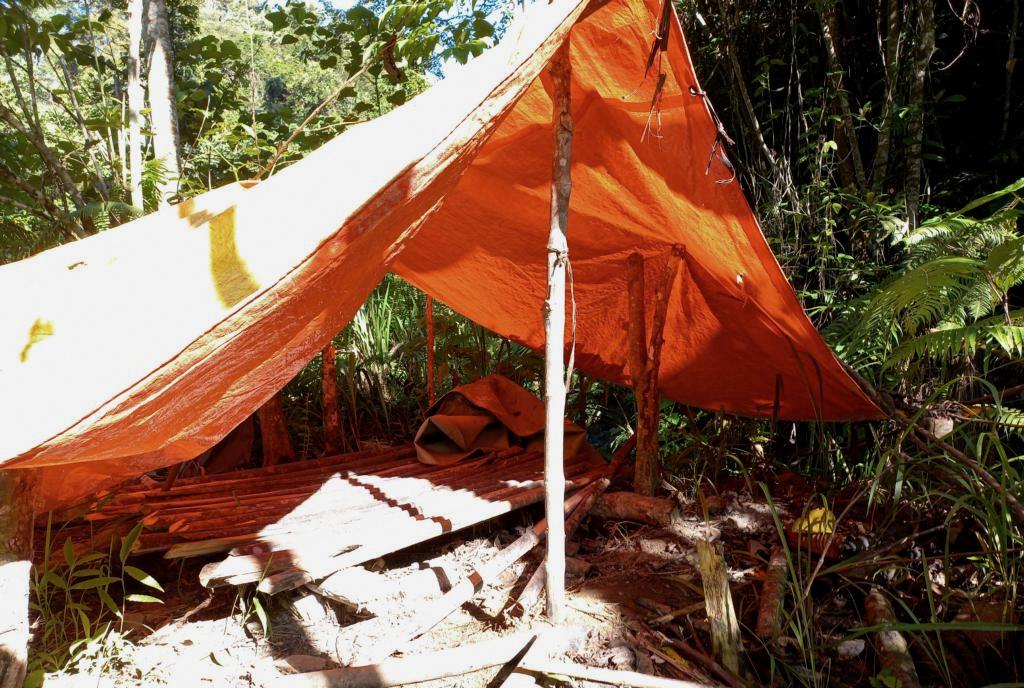
Protection against mosquitos
In the rainforest, the clayey ground often holds stagnant water pools and puddles. Mosquitos are known to fly in a radius of about 200m / 220 yds around such brooding places. When asked about malaria by the Orang Rimba, they answered that their ‘blood is strong enough’ to withstand this disease. But they encouraged me to use a mosquito net, as my blood would ‘not be strong enough.’ As I’m not a medical doctor, I can not comment on how a human body can build up some immunity against malaria. However, these people underwent a harsh selection process over time due to the trials and tribulations in the forests and developed a strong resilience against them. Only one disease decimated them considerably – ‘Small Box,’ brought in by outsiders.
Lessons learned from Orang Rimba shelters in the forests of Sumatra:
- Orang Rimba people use semi-permanent- and pop-up shelters.
- Plastic tarpaulins for roofs and walls are growing in popularity in both types of shelters.
- Semi-permanent shelters are necessary for social purposes and resting, but Orang Rimba people feel these structures restrict their freedom of living.
- Pop-up shelters in the forest still serve the preferred lifestyle of these people.
I gathered all the information above at a family group in the forests of Jambi and do not want to disclose the exact location. But it was not at Bukit Duabela National Park. Due to the small number of shelters seen, the above article describes the shelters of this specific group and makes no claim to general validity.

